
|

|
|
Home Site Search Contact Us Subscribe
|
|
|
Best Architecture Books of 2008 10 tomes from the superior to the indispensable By Norman Weinstein December 17, 2008 Maria E. Moreyra Garlock & David P.Billington, Felix Candela: Engineer, Builder, Structural Artist. (Yale University Press, $45). Note the absence of “architect” in the title of this far-reaching, well-illustrated study of one of the past century’s touchstone master builders, a structural engineer with an architect’s command of aesthetics. Savvy readers will quickly realize that for all the current palaver surrounding Calatrava’s engineer-architecture identity, Candela forged his own version of that hybrid identity with extraordinary style decades before Calatrava hung out his shingle. Candela’s life work was realized through the creation of thin-walled concrete shells, transforming them into buildings of remarkable economy and elegance. Here’s 10 astute essays by various hands, crisp plans and photos – and amazingly, this is the only substantial book on Candela in print, published in association with a current Candela exhibit at the Princeton University Art Museum.
Jerry Yudelson, Marketing Green Building Services: Strategies for Success (Architectural Press, $50). Once you overcome the fact that Yudelson’s writing style owes more to Zig Zigler than to Zola (what marketing maven wouldn’t that describe?) you begin to realize that this book offers invaluable tips on how to sell your green services. You can argue about his futurist projections about how the architecture market will turn into a brighter shade of monetary and ecological green in the near future, but he’s the most pragmatically grounded of futurists.
AIA: The Architecture’s Handbook of Professional Practice, 14th Edition (Wiley, $250). I know. You have a beef with it. Everyone has – through 14 editions. This is as earnest in presentation as a Girl Scout selling cookies, as green in this new edition as Gore (sans Gore’s rhetoric), and keeps the “arch” (pun intended) in architecture. Note the fresh emphasis on integrated practice and team building. Indispensable.
Katsumi Yumioka, Kimono and The Colors of Japan (Pie Books, $34.50). Don’t you remember fondly your hours in architecture school learning about the cross-cultural meanings of color? What? You never heard it mentioned? Here is a corrective. A knockout catalogue centering upon the meanings of color in kimono design. About 10 paragraphs of explanatory text in English, a bit more in Japanese, and enough spectacular kimono designs, sorted by color, to sizzle your synapses. Not only do the graphics alone usefully disturb your ethnocentric color prejudices, but the ways kimonos are displayed suggest creative uses of textiles in architectural design.
Ronald G. Knapp, Chinese Bridges: Living Architecture From China's Past (Tuttle, $49.95). Knapp is a careful and caring scholar of China’s architectural legacy and has been doing his homework in the U.S. and China for four decades. This exquisitely illustrated volume gives more insight into the cultural and philosophical systems undergirding all forms of Chinese architecture than any book in recent years. I would forgo most of the tonnage of glossy coffee table books about contemporary Chinese architecture and get this to understand the roots of China’s present by looking backward, particularly at the zigzag bridges Knapp showcases so lovingly.
Marie Antoinette Glaser, editor, Construction Site: Metamorphoses in the City (Lars Muller Publishers, $54.95). This is a very inviting anthology with 10 cogent and concise essays by European architects (plus a few charming polymaths without architectural credentials) about everyone’s favorite “no man’s land,” the construction site. Until the 12th of Never when all architects agree about how often (and how) they should observe at construction sites, this book will do nicely in keeping those not impertinent questions alive and well.
Michael Erlhoff and Tim Marshall, Eds., Design Dictionary: Perspectives on Design Terminology (Birkhauser, $54.95). As colossally ambitious and flawed as the new edition of The Architect’s Handbook of Professional Practice reviewed above, this kind of Chautauqua or charrette, with 110 international design scholars and 260 articles, is an equally potent tool. The emphasis on shifts of meaning in design vocabulary across cultures makes this a priceless resource as design collaborations across continents become increasingly commonplace. And while the writing is drier than mastodon bones, it remains lucid throughout. Superior on every level to the superficiality and hyper-Brit narrowness of The Oxford Dictionary of Design, and there’s little else on the market, alas.
1000X Architecture of the Americas (Braun, $125). This is a almost a shameless rip-off of the concept and look of the hernia-inducing and cortex-rejuvenating Phaidon Atlas of 21st Century Architecture, the one that comes packaged within its own plastic suitcase. Braun cuts costs by packaging this monster in a cardboard suitcase that can double as a small suitcase when you hit the road with the other homeless after your practice goes belly-up. By focusing exclusively only (only!) on 1,000 recent examples of stellar Western hemisphere architecture, and offering sharply written capsule descriptions framed by first-rate photos and plans, this invites relaxed browsing anytime.
Bauman Lyons Architects, How to be a Happy Architect (Black Dog Publishing, $40). The jive title is simply an obvious bait to get you to buy a book that is really about how to be an architect happily profiting from an integrated practice. The case for integrated design here is a bit intellectually lightweight, but this combo advertisement for the UK’s boldest firm of recent years attached to a manifesto for integrated design is an entertaining read. The bile directed against design competitions will make you smile – even if you beg to differ.
Cole Swensen, Ours. (University of California Press, $18). The best landscape architecture book of the year is a book-length poem that gets inside the critical thinking of Andre Le Notre, the great landscape artist whose thinking birthed Versailles. Swensen avoids the easy temptation of rhapsodizing about la genius and perceptively evokes in her carefully manicured lines (exactly) Le Notre’s peculiar plays with light and perspective.
Norman Weinstein writes about architecture and design for The Christian Science Monitor and other publications. He teaches communication skills to architects and can be reached at nweinste@mindspring.com.
Also by Weinstein:
WORDS THAT BUILD: Tips #1 - #9: exclusive ArchNewsNow series focusing on the overlooked foundation of architecture: oral and written communication.
|
(click on pictures to enlarge) 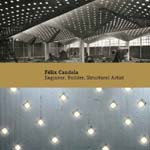 Felix Candela: Engineer, Builder, Structural Artist, by Maria E. Moreyra Garlock & David P.Billington  Marketing Green Building Services: Strategies for Success, by Jerry Yudelson 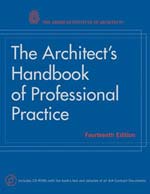 AIA: The Architecture’s Handbook of Professional Practice, 14th Edition, by the American Institute of Architects  Kimono and The Colors of Japan, by Katsumi Yumioka 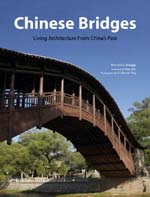 Chinese Bridges: Living Architecture From China’s Past, by Ronald G. Knapp 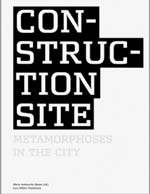 Construction Site, Marie Antoinette Glaser, editor 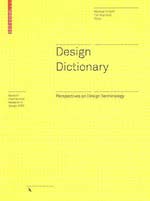 Design Dictionary: Perspectives on Design Terminology, Michael Erlhoff and Tim Marshall, editors  1000X Architecture of the Americas 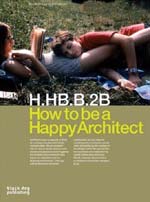 How to be a Happy Architect, by Bauman Lyons Architects 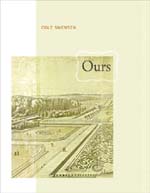 Ours, by Cole Swensen |
© 2008 ArchNewsNow.com